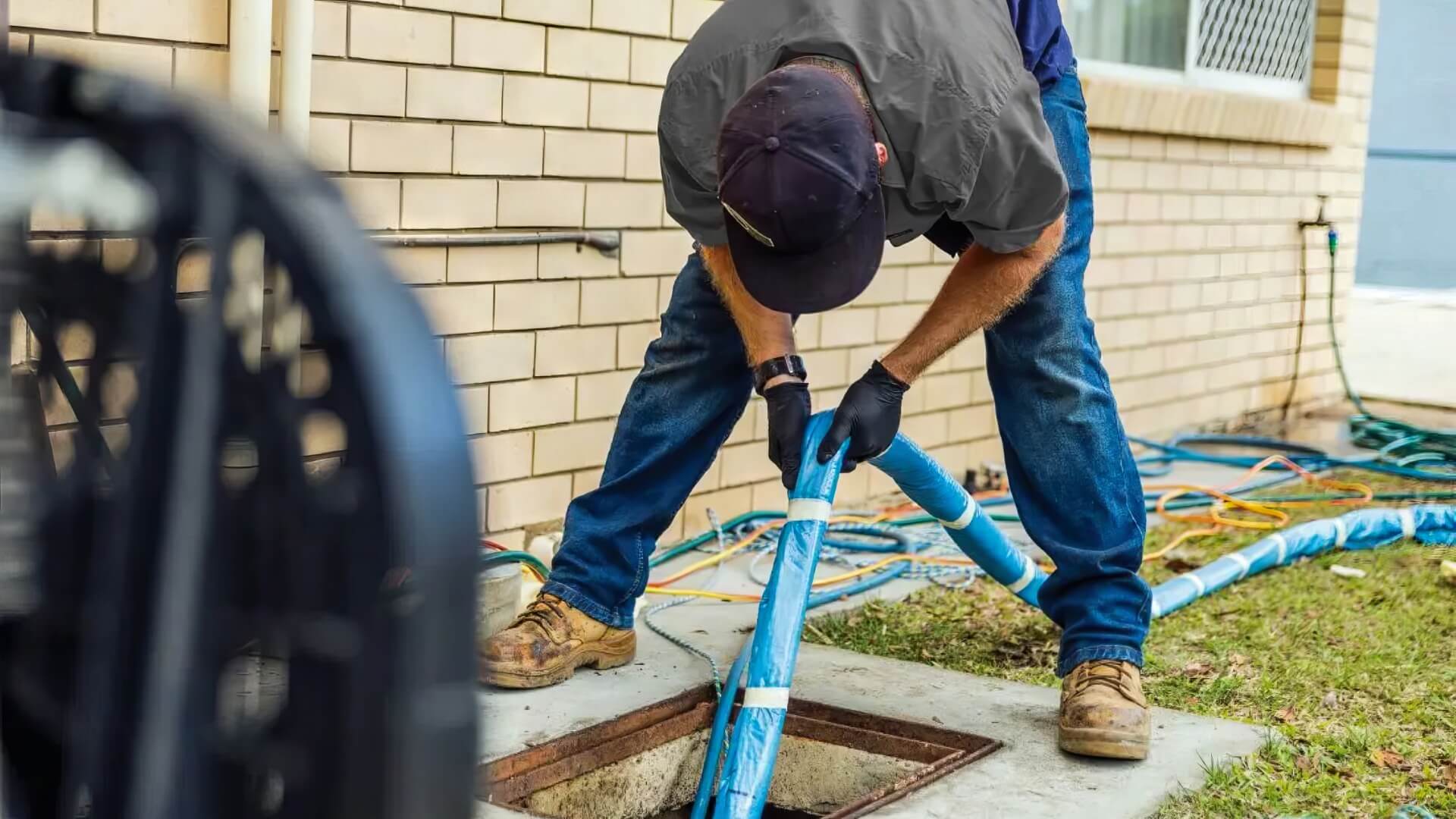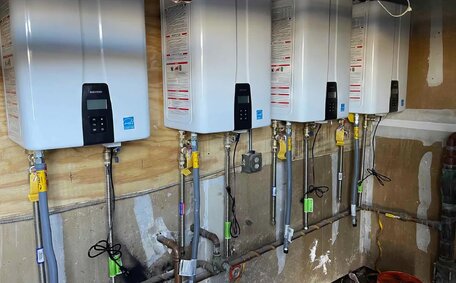What is Pipe Relining?
Pipe relining is a trenchless method for repairing your property’s pipes, what you need to know, without having to dig them up. It involves inserting a flexible felt liner saturated with epoxy resin into damaged pipes.
Once inserted, the new lining which can be cured using hot water, steam, UV light or air pressure to harden the liner inside, essentially creating a new pipe within the damaged section.
The key benefit of pipe relining over traditional pipe replacement is that it is minimally invasive, something you need to know. There is no need to dig trenches or tear up floors and walls when fixing your pipes using the relining method. Pipe relining can restore your sewer pipes’ function and stop leaks, presenting a more cost-effective repair that your pipes can greatly benefit from, ensuring the best pipe functionality while avoiding the often costly process of digging up your home or property.
Pipes can get damaged over time, corroding, cracking, collapsing, or being invaded by tree roots, among other factors. By using pipe relining and understanding how does pipe relining work instead of replacing them, you can save substantial time, money and disruption, ensuring your existing pipes remain in prime condition. The process plumbers use leaves your yard or landscaping undisturbed compared to traditional pipe repair methods.
When to Consider Relining Your Pipes
There are several signs that indicate it may be time to consider relining your pipes:
- Frequent clogs or symptoms of pipes that need relined
- Leaking pipes causing damage to your property
- Noticeable drops in water pressure
- Detectable broken pipe damage during CCTV drain inspections
- Presence of roots or other obstructions in pipes
- Corrosion and rust stains around joints
- Pitting or other visible signs of deterioration on pipe exteriors
Pipe relining in Colyton, Sydney can prevent more serious pipe failures down the road. It is often a smarter investment to reline pipes can preemptively before total collapses occur and cause flooding or sinkholes.
Our experienced team can help assess your plumbing issues through CCTV and recommend repairing damaged sections that would benefit from epoxy relining. Compared to full pipe replacement, relining requires little digging and restores stability at a fraction of the cost.
Don’t wait until your plumbing encounters problems; your proactive measures can prevent significant issues. Minor leaks and blockages usually indicate larger issues brewing within your pipes. Contact our team today to learn what you need to know about pipe relining, and if it’s the correct solution for your home’s piping system.
Understanding How Pipe Relining Works
The pipe relining process consists of various steps involved, all carried out by our experienced professionals:
- CCTV Drain Inspection - We first send a drain camera through your pipes to assess the extent of damage and determine which sections need relining.
- Pipe Cleaning - Next, we use an inverter drum, mechanical cutters, or employ a robotic cutter, all tools used to remove old linings, corrosion, roots, and debris, which are typically involved in pipe cleaning procedures.
- Lining Installation - Once cleaned, we prepare the new liner – the material used being a felt tube saturated with epoxy resin – and insert it inside existing pipe sections through access points.
- Curing - The liner is then cured in place using hot water, steam, ultraviolet light, or compressed air to harden the resin.
- Final Testing - After curing we confirm a tight seal using another CCTV inspection and test for leaks or blockages.
The result is a seamlessly relined pipe that restores function and resists wear and tear; but how long does a pipe like this last? Typically, for 25-50 more years. The process causes less damage than traditional pipe replacement methods that involve extensive digging.
Thinking about the environmental impact, many homeowners begin to ponder, 'how much better is pipe relining?' It significantly reduces environmental impact by reusing the current pipes. By preserving the old pipes already inside groundworks, you effectively cut out landfill waste and prevent unnecessary ground disruption from excavations.
Feel free to contact our plumbing experts at Colyton Plumbing to learn more about how pipe relining can provide an efficient and long-lasting drain repair solution.
Inspecting and Preparing the Damaged Pipe
The first step in the does pipe relining process is performing an inspection of the damaged sections using CCTV drain cameras. Our technicians will insert a camera into your pipes to pinpoint problem areas and determine which pipes need attention due to damage.
We look for cracked broken pipes, obstacles like tree roots growing inside the line, buildup of corrosion and heavy pitting. The camera inspection maps out the portions of the pipework homeowners know about and which portions need relining.
we prepare the pipe for a thorough pipe flush by cleaning out debris using a water jetter among other methods. We use methods like high-pressure water jetting, mechanical scraping tools and robotic cutters to remove old linings, roots, grease and corrosion from inside the pipe walls.
After cleaning, we make any necessary repairs to the severely damaged section pipe that may need patching or reinforcement prior to inserting the epoxy liner. The pipe interior needs to be free of snags that could tear the liner during installation.
Once prepped, the old pipe sections are ready to be filled with the flexible epoxy lining to be saturated with resin and pulled into place. It’s crucial to properly flush out the interior to ensure the liner can adhere properly and future leaks or failures are avoided.
Inserting and Curing the Pipe Lining
Once the damaged pipe section has been thoroughly cleaned and the pipe ready, we proceed to insert the pipe lining.
The liner itself is a flexible felt tube or sleeve that has been pre-saturated with eco-friendly epoxy resin - a two-part polymer compound that secures itself inside pipe. Our technicians meticulously proceed with repairing pipes by carefully feeding the resin-coated liner into the pipe sections, ensuring even distribution.
With the new pipe within old in place, the resin is left cure using hot water, steam, UV light exposure or compressed air. This curing process, depending on factors such as pipe length and diameter, usually takes a few hours with larger pipes taking longer.
As the resin cures, it bonds firmly to the old pipe walls, sealing cracks and leaks. It also forms a smooth, interior that withstands wear and tear, highly resistant to future damage from roots, corrosion and more.
Once cured, we confirm a tight seal using another CCTV pipe inspection. Assuming no leaks or defects, your pipe is now successfully relined and restored to functional condition from the inside out with minimal property impact.
Reconnecting and Testing the Relined Pipe
After the epoxy resin liner has fully cured and hardened, the final step is reconnecting the lining process for the relined pipe section to your plumbing system. Our technicians open up any access points that were used to insert the liner in the first place.
We then ensure all pipes, joints and openings come out equipped with new fittings and seals to integrate the relined portion with the rest of the system. High-quality materials ensure a watertight, long-lasting connection.
Before completing the job, we thoroughly test the pipe integrity by sending water through under pressure and inspecting closely for leaks. We also use a CCTV camera again post pipe relining to ensure there are no new cracks, leaks or other defects following the curing and reconnection process.
Once the relined section passes both the water pressure check and camera inspection, you can rest assured knowing your pipes have been restored from the inside out with solid epoxy walls resistant to future damage for decades to come.
The Benefits of Choosing Pipe Relining
There are many advantages to pipe relining compared to full pipe replacement:
- Less Property Damage - The relining process preserves floors, landscaping and structures since no digging or demolition is required.
- Lower Cost - Sewer pipe relining costs a fraction compared to replacement, which requires excavation expenses.
- Minimal Disruption - Households and businesses see little to no disruption during the relining process.
- Longevity - The seamless epoxy liner can last an estimated 50+ years with proper maintenance.
- Sustainability - Relining reuses pipes rather than sending them to landfills.
- Versatility - Pipe relining works for a wide range of piping materials including pvc pipe and sizes.
- Speed - Pipe relining usually takes merely 1-2 days, far less time than pipe replacement which can stretch out over weeks.
Our team at Colyton Plumbing provides comprehensive pipe relining services, holding 50+ years of combined experience including traditional repairs. Contact us to learn if relining is the right solution for your home or business.
Pipe Relining vs Traditional Pipe Replacement
Pipe relining provides a trenchless alternative to full pipe replacement that is less invasive, faster, and more sustainable.
Full pipe replacement involves extensive excavation to access and remove your drain’s old piping. Yards get dug up, landscaping damaged, and households disrupted over a period of weeks. It also generates huge quantities of pipe waste headed to landfills.
In contrast, pipe relining inserts a resin-coated liner into the existing pipe from insertion points requiring little digging. The old pipe is then filled and the resin cures to form a seamless new pipe wall in just 1-2 days. Relining preserves yards, structures, and the pipes themselves from destruction.
Here is a full comparison between these pipeline repair options:
- Excavation Required:
- Pipe Replacement - Extensive
- Pipe Relining - Minimal
- Timeframe:
- Pipe Replacement – Weeks of work
- Pipe Relining – 1 to 2 days
- Cost:
- Pipe Replacement - Approximately $4,000+ for a single residential sewer line
- Pipe Relining - As low as $2,500+ for the same sewer line
- Sustainability:
- Pipe Replacement - Pipes hauled to landfills
- Pipe Relining - Existing pipes preserved
- Lifespan:
- Pipe Replacement – 50+ years for new pipes
- Pipe Relining – 50+ years
In nearly all situations, epoxy pipe relining provides a superior pipeline restoration solution over traditional pipe replacements. Contact our team at Colyton Plumbing when comes to deciding if relining is right for your situation.
Caring for Your Relined Pipes
Properly maintaining your relined pipes is crucial for longevity. We recommend inspecting for leaks or other issues during routine household plumbing checks. Contact us immediately if you notice dripping taps, damp walls, or drops in water flow or pressure.
You can go a long way in preserving your relining by avoiding pouring fats, oils, and abrasive chemicals down drains. Use drain strainers to catch food scraps and hair. We also advise against planting trees or invasive vegetation near underground pipe sections.
For ongoing sewer pipe upkeep, consider scheduling annual drain inspections and cleaning with our team at Colyton Plumbing. We offer affordable maintenance plans to proactively monitor your pipelining and address minor problems before they turn critical.
Please Feel free to reach out to our pipe relining experts by phone at 1300 349 338 or email us at jobs@colytonplumbingservices.com.au for tips on properly maintaining pipes after relining. With regular care and a proper maintenance routine, you can see your reinforced piping last for decades.






